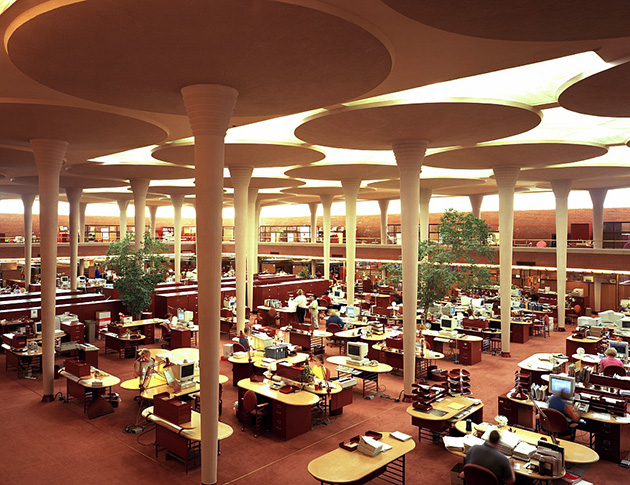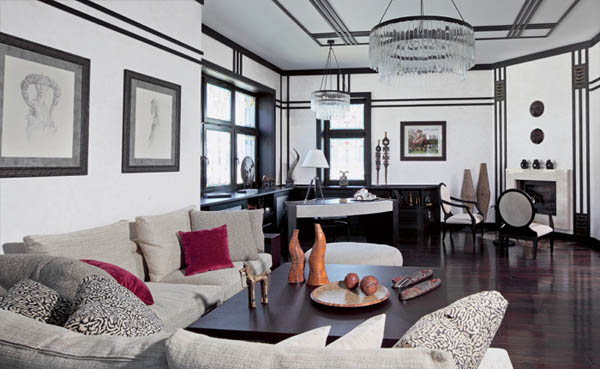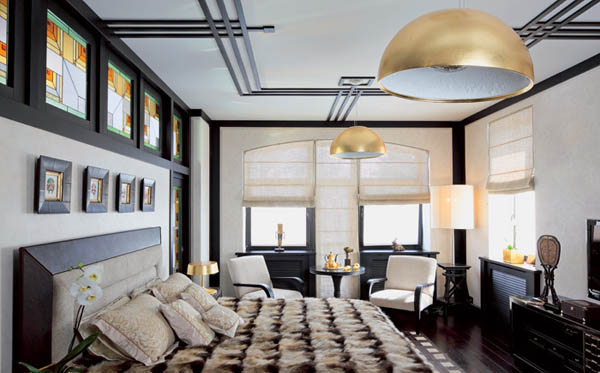History:

The second phase of Modernism in America had a different feel than the first phase transition. The most successful designers were using the dominant movement of eclectic historicism which were based on concepts from the Paris Ecole des Beaux-Arts. During this phase works done by Wright and Sullivan were typically ignored or overlooked.
Works completed by Frank Lloyd Wright after his return from Japan in 1922 was not considered a form of the International Style at the time. This caused Wright to continue producing works but at a much lesser level than he had in previous years. During this period in the 1920's and 1930's, he did produce some of his greatest works. Some of his residential projects included the Hollyhock House and the Millard. His commercial projects included the S.C. Johnson Company Office Building in Wisconsin; this building was actually one of the first floors plans that introduced the idea of an open office layout.

Most of the prominent architects during this period were influenced by the projects of the architects and designers who had originally launched the modernism movement, like Frank Lloyd Wright and Mies van de Rohe. The Taliesin Fellowship, which was a group of followers and apprentices of Wright, Wright was known to advise up-and-coming designers to avoid the traditional architectural programs and to study underneath him at his home in order to learn his techniques.

One of the collaborators of Wright was Austrian born architect Rudolph Schindler. Each of his designs were an unique exploration of space. The Schindler House, which was built in 1992, was constructed using the materials of concrete, glass, and metal. The design was formed using a tilt slab method. This house is unique because the fact that it was designed around two individual families living in a shared space. It was actually Rudolph Schindler and Richard Neutra's families that would be living in the home.
Other designers that became very popular were Richard Neutra, William Lescaze, Philip Goodwin, Edward Stone. Walter Gropius, Marcel Bruer, Mies van de Rohe, Philip Johnson, and more. Skidmore, Ownngs, & Merrill was also an architectural firm that emerged and made a name for itself during this time.
Current Applications:



Blog Discussion:
I reviewed Megan Sanderson's blog and I thought it was interesting how she decided to focus on Frank Llyod Wright and Irving Gill as two of the primary architects that influenced the modernism movement in America. I also really enjoyed her link to the video about the Falling Waters home.
I also reviewed Flor's blog and I liked how when she examined it home she had multiple pictures to elaborate the characteristics assocaited with it home and how those characteristics associated with the stylistic movement. The video she posted was also extremely intriguing.
Video Link!
Tour of the interior of the Schindler home
https://www.youtube.com/watch?v=zJ_kJ3RR3_E








